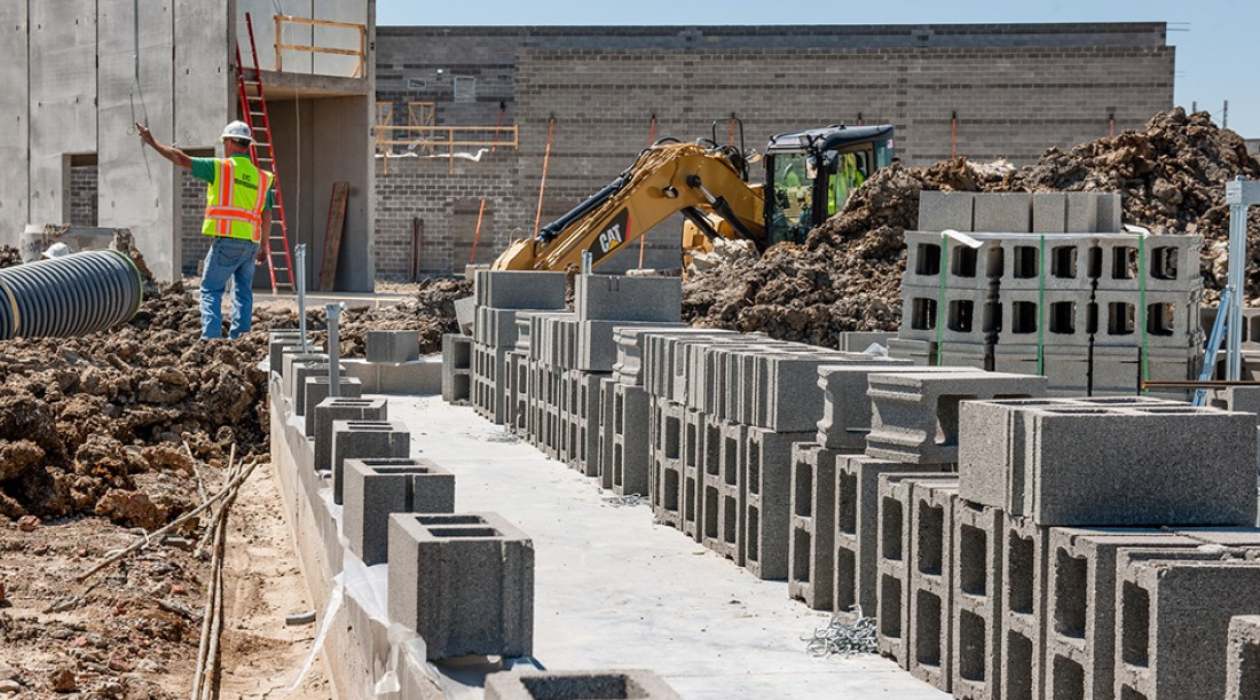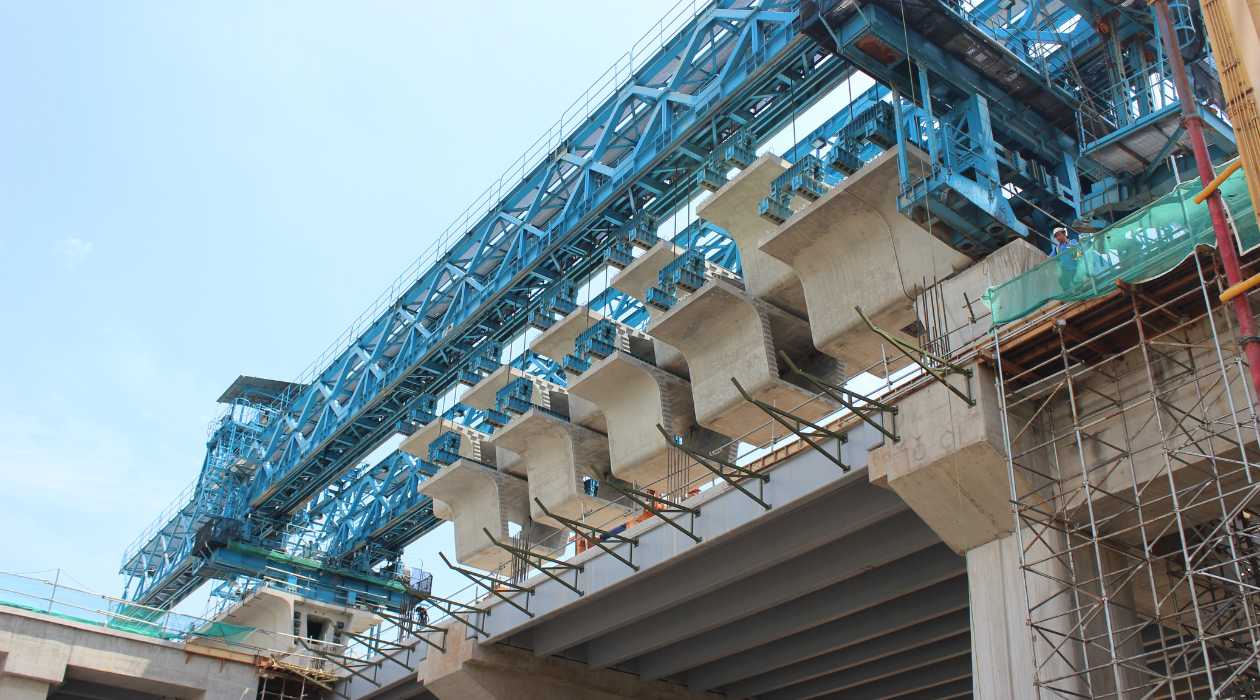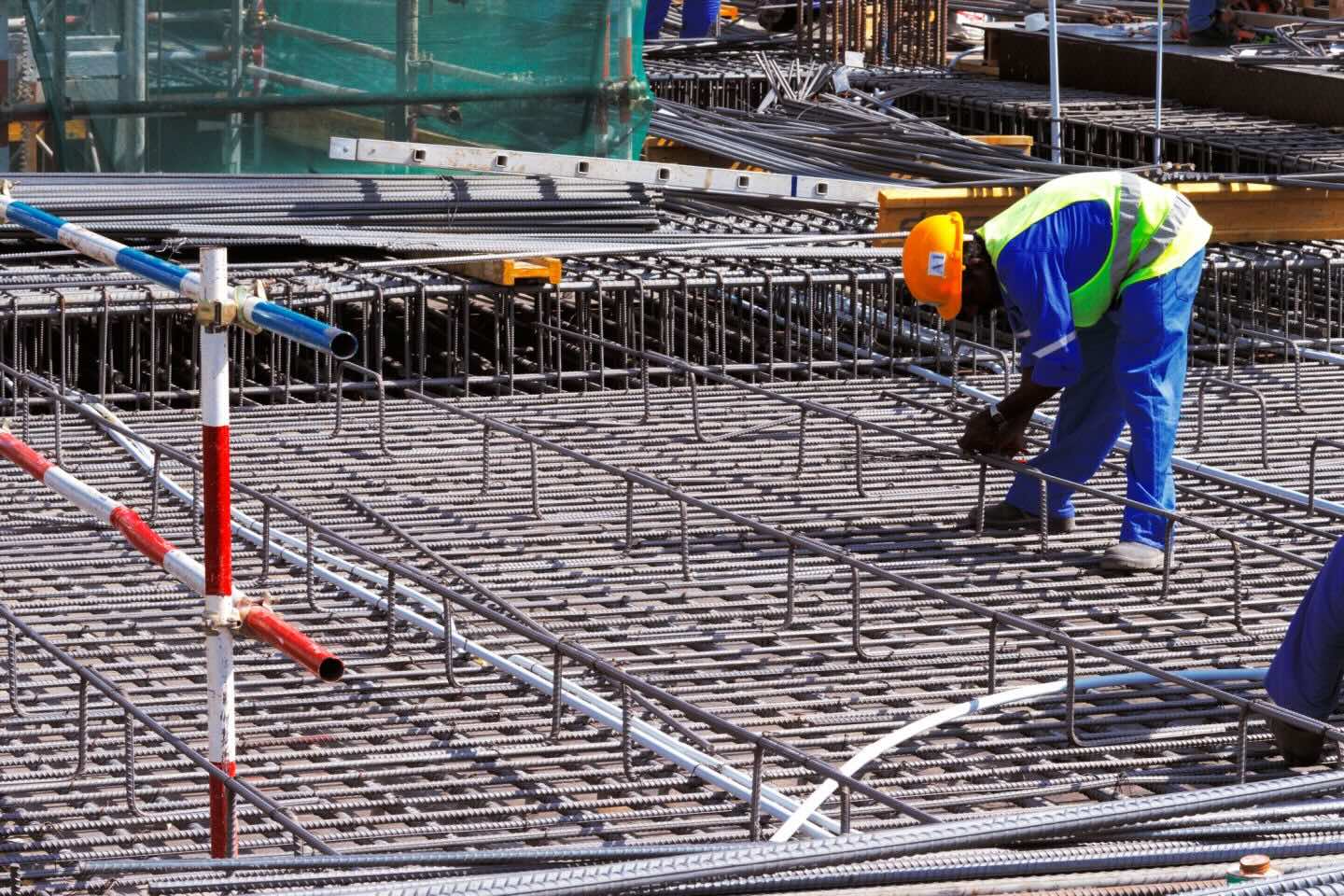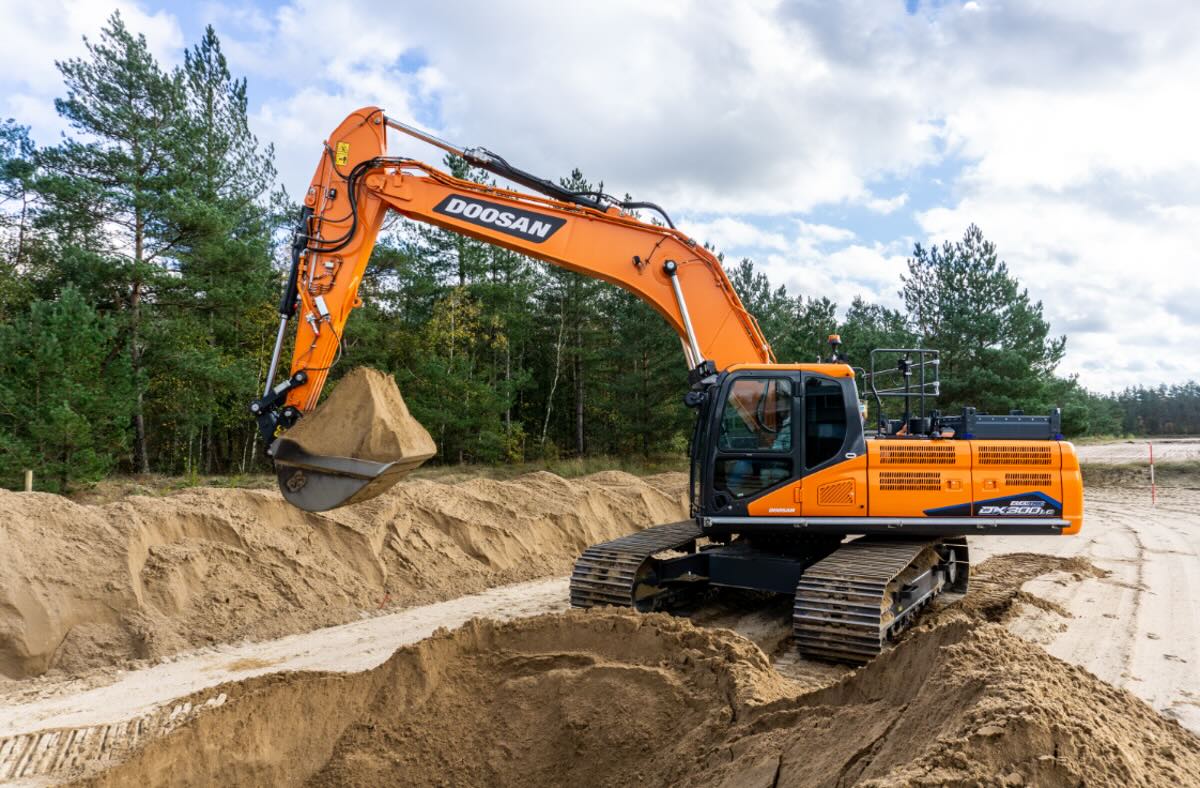Home>diy>Building & Construction>What Is A Header Construction


Building & Construction
What Is A Header Construction
Modified: December 7, 2023
Learn about header construction in building construction. Find out what headers are, their importance in structural integrity, and the various materials used.
(Many of the links in this article redirect to a specific reviewed product. Your purchase of these products through affiliate links helps to generate commission for Storables.com, at no extra cost. Learn more)
Introduction
Header construction is a critical aspect of building construction that plays a crucial role in the structural integrity, stability, and overall performance of a building. The header, also known as the lintel, is the horizontal structural element located above doors, windows, openings, and other load-bearing areas.
The primary function of a header is to distribute the weight of the structure above it and transfer it to the vertical supports or columns on either side. Headers are responsible for bearing the loads imposed on them, including the weight of the wall, roof, and any additional loads such as snow, wind, or seismic forces.
Proper header construction is essential to ensure the structural integrity and safety of the building, as well as to prevent sagging, cracking, or collapsing of the openings. In this article, we will explore the definition of header construction, the various types of header construction, the components involved, the importance of proper construction techniques, common issues that can arise, and best practices for effective header construction.
Whether you are a construction professional, a building owner, or a homeowner, understanding the importance of proper header construction is crucial for ensuring the longevity and safety of your structure. So, let’s dive into the world of header construction and discover the key elements that make it successful.
Key Takeaways:
- Proper header construction is crucial for maintaining a building’s structural integrity, load-bearing capacity, and overall safety. It involves meticulous planning, skilled craftsmanship, and adherence to industry best practices.
- Understanding the types, components, and common issues of header construction is essential for construction professionals, building owners, and homeowners. Consulting with professionals and following best practices ensures successful header construction.
Read more: What Is Pre-Construction In Construction
Definition of Header Construction
Header construction refers to the process of designing and constructing the horizontal structural element, commonly known as the header or lintel, that spans over openings in a building, such as doors, windows, and archways. The purpose of the header is to distribute the load from the structure above it and transfer it to the vertical supports or columns on either side.
Headers are typically made of various materials, including wood, steel, reinforced concrete, or a combination of these materials. The choice of material depends on factors such as the structure’s design, load requirements, and budget constraints.
The design of a header takes into account the anticipated loads that it will bear, including the weight of the wall or roof above, as well as any additional vertical loads such as snow, wind, or seismic forces. The dimensions and specifications of the header, including its length, depth, and width, are determined based on engineering calculations and building code requirements.
During the construction process, the header is carefully installed and positioned above the opening using techniques such as shimming, leveling, and securing it to the surrounding structure. The header must be adequately supported on both ends, typically by vertical supports such as columns, bearing walls, or dedicated lintel supports.
Header construction involves meticulous planning, accurate measurements, and precision installation to ensure that the load-bearing capacity is sufficient to prevent sagging, cracking, or failure of the structure. Proper header construction is essential for maintaining the structural integrity of the building and ensuring its safety and longevity.
It is important to note that the design and construction of headers may vary depending on the building’s type, purpose, and local building codes. Consulting with a structural engineer or a qualified professional is recommended to ensure compliance with regulations and to ensure safe and efficient header construction within the specific context of the project.
Types of Header Construction
Header construction methods can vary depending on different factors, such as the building design, load requirements, and the type of material used. Here are some common types of header construction:
-
Wooden Header:
Wooden headers are one of the most common types of header construction, especially in residential buildings. They are typically made of solid lumber or engineered wood products such as laminated veneer lumber (LVL) or glued laminated timber (glulam). Wooden headers offer flexibility in design and are relatively cost-effective.
-
Steel Header:
Steel headers are often used in commercial or industrial buildings where high load-bearing capacity is required. They are fabricated from steel beams or channels and are known for their strength, durability, and resistance to fire. Steel headers can span longer distances and support heavier loads compared to wooden headers.
-
Read more: What Is Construction
Reinforced Concrete Header:
Reinforced concrete headers are commonly used in buildings where superior load-bearing capacity is needed. They are constructed using steel reinforcement bars embedded within the concrete matrix. Reinforced concrete headers offer excellent fire resistance, durability, and can withstand high loads and structural forces.
-
Masonry Header:
Masonry headers are constructed using bricks or stones and are often found in older or traditional buildings. They are built by carefully layering bricks or stones in a specific pattern to create a load-bearing arch or lintel. These headers provide aesthetic appeal and can add a unique architectural element to a structure.
-
Composite Header:
Composite headers combine different materials such as wood, steel, or concrete to take advantage of the unique properties of each material. For example, a composite header may consist of a steel beam with wooden studs attached to it. Composite headers are used to achieve specific load-bearing requirements or to address design challenges.
It is crucial to consider various factors such as load requirements, local building codes, and budget constraints when choosing the appropriate type of header construction for a particular project. Consulting with a structural engineer or a building professional can help determine the most suitable header construction method based on the specific needs and context of the building.
Components of Header Construction
Header construction involves several essential components that work together to ensure the stability and functionality of the header. Understanding these components is crucial for proper header construction. Here are the key components:
-
Read more: What Is A Construction Defect
Header Material:
The choice of material for the header depends on factors such as load requirements, building design, and budget. Common materials include wood, steel, reinforced concrete, or a combination of these materials.
-
Header Beam:
The header beam is the main load-bearing element that spans horizontally across the opening. It is responsible for transferring the loads from the structure above to the vertical supports on either side. The beam’s size and dimensions are determined based on engineering calculations.
-
Supporting Elements:
Headers require proper support on both ends to ensure their stability and load-bearing capacity. Common types of supporting elements include columns, bearing walls, or dedicated lintel supports. These elements are responsible for transferring the load from the header to the foundation or the surrounding structure.
-
Fasteners:
Various fasteners such as screws, nails, bolts, or connectors are used to secure the header components together. These fasteners must be chosen based on their load-bearing capacity and compatibility with the selected materials.
-
Read more: What Is Planning In Construction
Flashing:
Flashing is a component used to prevent water penetration around the header area. It is typically made of a waterproof material, such as metal or synthetic membrane, and is installed between the header and the surrounding wall or roof components.
-
Insulation:
Proper insulation is essential in header construction to enhance energy efficiency and prevent thermal bridging. Insulation material is installed around the header to minimize heat transfer and improve the building’s overall energy performance.
-
Finish Materials:
Finish materials, such as drywall, trim, or cladding, are applied to the header to provide a finished appearance that seamlessly integrates with the surrounding wall or surface.
Each component plays a vital role in the overall performance and durability of the header. It is important to ensure alignment, compatibility, and proper installation of these components to achieve a successful header construction.
Importance of Proper Header Construction
Proper header construction is of paramount importance in building construction for several reasons. Here are some key reasons why proper header construction is crucial:
-
Read more: What Is A Superintendent In Construction
Structural Integrity:
Headers play a critical role in maintaining the structural integrity of a building. They distribute the weight from above the opening to the vertical supports, ensuring that the load is properly distributed and supported. Proper construction techniques and materials are essential to prevent sagging, cracking, or failure of the header, which can compromise the stability of the entire structure.
-
Load-Bearing Capacity:
A well-constructed header must have sufficient load-bearing capacity to support the weight placed upon it. Improperly designed or constructed headers may lead to overloading, resulting in structural damages or collapses. Proper header construction techniques, along with accurate engineering calculations, ensure that the header can effectively bear the anticipated loads and meet the building code requirements.
-
Prevention of Structural Damage:
A poorly constructed header can cause structural damages, such as sagging walls or ceilings, cracks in the walls or foundation, or misaligned doors and windows. These issues not only compromise the building’s aesthetics but also impact its functionality and can lead to costly repairs in the future. Proper header construction mitigates the risk of such damages and ensures the long-term performance of the building.
-
Safety and Occupational Hazards:
Inadequate header construction can pose safety risks to occupants and construction workers. A weak or improperly supported header may collapse during construction or use, leading to injuries or fatalities. Additionally, a compromised header may result in unstable doors or windows, creating potential hazards for building occupants. Proper header construction ensures a safe living or working environment for all.
-
Read more: What Is Boring In Construction
Compliance with Building Codes:
Building codes and regulations establish minimum standards for header construction to ensure the safety and integrity of buildings. Proper construction techniques ensure compliance with these codes and regulations. Non-compliance can result in legal issues, fines, delays in project completion, or difficulties during property inspections. Adhering to building codes is crucial for the overall success and legality of the construction project.
In summary, proper header construction is essential for maintaining the structural integrity, load-bearing capacity, and overall safety of a building. Investing in proper construction techniques, quality materials, and professional expertise can prevent structural damages, ensure compliance with building codes, and provide a safe and durable structure for occupants.
Common Issues with Header Construction
Header construction, like any other construction process, can encounter various issues that may compromise the integrity and performance of the header. It is essential to be aware of these common issues to address them effectively. Here are some common issues that can arise with header construction:
-
Inadequate Load-Bearing Capacity:
If a header is not properly designed or constructed to bear the anticipated loads, it may lead to structural failure or sagging. This issue can occur when the header material, dimensions, or support elements are not adequately chosen or installed. Insufficient load-bearing capacity can result in cracks, deflection, or collapse of the header.
-
Improper Installation:
Improper installation of the header can cause problems such as misalignment, uneven weight distribution, or instability. Mistakes during the installation process, such as inadequate shimming, incorrect leveling, or insufficient fastening, can impact the header’s performance and compromise its structural integrity.
-
Read more: What Is Sitework In Construction
Inadequate Support:
If the header lacks proper support on both ends, it can lead to excessive deflection or failure. Insufficient or poorly designed supporting elements, such as columns or bearing walls, may result in an uneven distribution of the load, leading to structural issues and compromised safety.
-
Moisture Damage:
Moisture intrusion can cause significant damage to headers, especially if proper moisture protection measures are not taken. Moisture can lead to the deterioration of materials, such as wood rot or corrosion of metal components. This can weaken the header and may result in structural problems or the growth of mold and mildew.
-
Thermal Bridging:
Thermal bridging occurs when there is a break in the insulation layer surrounding the header, allowing heat or cold to transfer through the header. This can lead to energy inefficiency, thermal discomfort, and condensation issues. Proper insulation and thermal break solutions should be implemented to prevent thermal bridging.
-
Failure to Meet Building Codes:
Failure to comply with local building codes and regulations can result in serious consequences. Insufficient header construction may lead to non-compliance with load-bearing capacity requirements, fire safety standards, or structural performance criteria. This can result in legal issues, delays in project completion, and costly retrofits to meet code compliance.
Addressing these common issues requires careful planning, proper design, skilled craftsmanship, and adherence to building codes and industry best practices. Engaging professional engineers, contractors, or construction experts can help identify and rectify any problems during header construction, ensuring a strong and durable structure.
Read more: What Are Joists In Construction
Best Practices for Header Construction
To ensure the successful construction of headers and to avoid common issues, it is important to follow industry best practices. Here are some key best practices for header construction:
-
Design by a Structural Engineer:
Before starting header construction, consult with a qualified structural engineer. They will determine the appropriate dimensions, materials, and supporting elements based on load requirements, building codes, and structural calculations.
-
Choose Suitable Materials:
Select materials that are suitable for the specific project requirements. Consider factors such as load-bearing capacity, durability, fire resistance, and compatibility with surrounding materials. Consult with professionals to determine the most appropriate material for your header.
-
Proper Load Distribution:
Ensure that the header is adequately supported on both ends to distribute the load evenly. Use appropriate supporting elements, such as columns or bearing walls, that can safely transfer the load to the foundation or surrounding structure.
-
Read more: What Is A Trade In Construction
Adequate Fastening:
Use high-quality and appropriate fasteners, such as screws, nails, or bolts, to securely connect the header components. Follow manufacturer specifications and building code requirements for fastener types, sizes, and spacing to ensure structural integrity.
-
Proper Installation:
Ensure that the header is correctly leveled, aligned, and shimmed during installation. This helps prevent sagging or uneven weight distribution. Use a professional contractor or skilled construction personnel who have experience in header installation.
-
Moisture Protection:
Implement effective moisture protection measures to prevent water intrusion. Use appropriate flashing materials and sealing techniques around the header area to keep moisture out and protect the header from rot and deterioration.
-
Insulation and Thermal Break:
Install proper insulation around the header area to prevent thermal bridging. This helps maintain energy efficiency and prevents condensation issues. Include thermal break elements to minimize heat transfer and ensure optimal thermal performance.
-
Read more: What Is Surety In Construction
Regular Inspections:
Periodically inspect headers for any signs of damage, cracks, or sagging. Address any issues promptly to prevent further deterioration or potential structural problems. Regular maintenance and inspections are crucial for ensuring the long-term integrity of headers.
-
Adherence to Building Codes:
Comply with local building codes, regulations, and permit requirements for header construction. Work with professionals who are knowledgeable about building codes to ensure that the construction meets all necessary standards.
By following these best practices, you can ensure the proper construction of headers, resulting in structurally sound and durable buildings. Consulting with experienced professionals, such as engineers and contractors, is highly recommended to achieve the best possible outcomes in header construction.
Conclusion
Header construction is a vital aspect of building construction that requires careful planning, skilled craftsmanship, and adherence to industry best practices. Headers play a crucial role in providing structural integrity, load-bearing capacity, and stability to buildings. Proper header construction ensures the safety, durability, and functionality of the structure.
Understanding the definition, types, components, and best practices of header construction is essential for construction professionals, building owners, and homeowners. By following industry best practices, such as consulting with structural engineers, choosing suitable materials, providing adequate support, and ensuring proper installation, you can avoid common issues and ensure the successful construction of headers.
Headers can be constructed using a variety of materials, including wood, steel, reinforced concrete, or a combination of these materials. The choice of material depends on factors such as load requirements, design considerations, and budget constraints. It is important to consider the specific needs of the project and consult with professionals to determine the most suitable material for the header.
Proper header construction involves various components, including the header material, beam, supporting elements, fasteners, flashing, insulation, and finish materials. Each component plays a crucial role in ensuring the header’s stability, load-bearing capacity, and longevity. Attention to detail during the construction process, including proper load distribution, moisture protection, insulation, and adherence to building codes, is crucial for the long-term performance and safety of the header.
By adhering to best practices and maintaining regular inspections, you can prevent common issues and address any potential problems with headers in a timely manner. This ensures that the headers remain structurally sound and functional throughout the life of the building.
In conclusion, proper header construction is essential for the overall success of building projects. By understanding the importance of headers, following best practices, and seeking professional guidance when needed, you can achieve a safe, durable, and structurally sound building that meets all necessary building codes and regulations.
Frequently Asked Questions about What Is A Header Construction
Was this page helpful?
At Storables.com, we guarantee accurate and reliable information. Our content, validated by Expert Board Contributors, is crafted following stringent Editorial Policies. We're committed to providing you with well-researched, expert-backed insights for all your informational needs.







0 thoughts on “What Is A Header Construction”